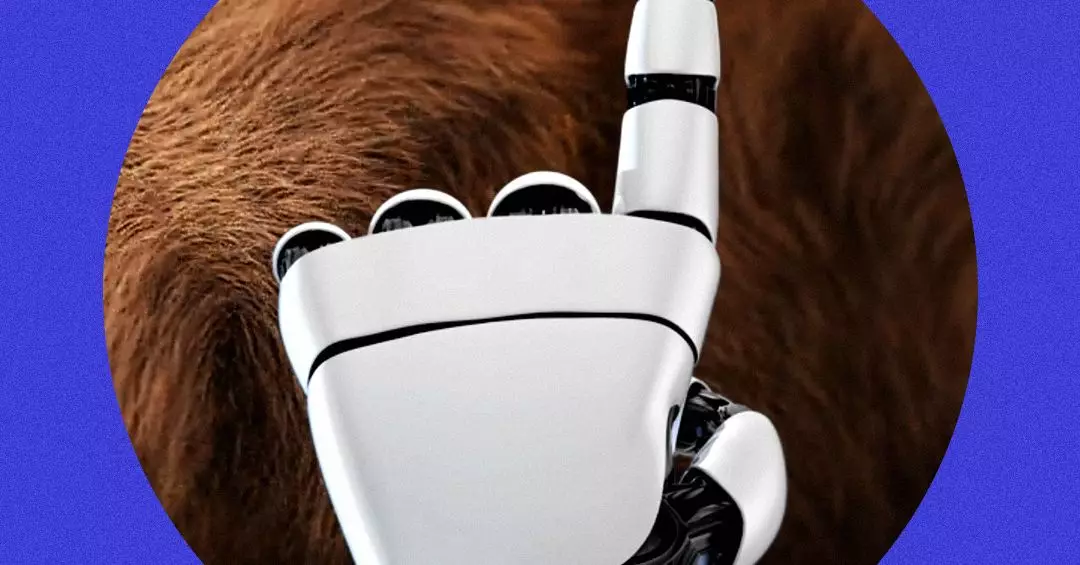In the evolving landscape of automation, Amazon has taken a bold step forward with its revolutionary warehouse robot, Vulcan. This innovative creation signifies more than just another robotic advancement—it represents a pathway towards enhanced tactile precision in warehouse operations. Unlike traditional robotic arms that struggle with delicacy, Vulcan employs a touch-sensitive system that allows it to deftly navigate shelves filled with diverse products. Empowered by advanced technology, Vulcan is not merely a tool, but a game-changer in the fulfillment center environment.
A Deep Dive into Vulcan’s Functionality
Vulcan, spearheaded by Amazon’s robotics division under the guidance of Aaron Parness, features a unique design that marries mechanical engineering with sophisticated sensory technology. The core of its functionality rests in its ability to engage in physical interaction—essentially “feeling” its way through stacks of goods to locate the desired items. The robot is equipped with a specialized spatula-like appendage and an inventive suction mechanism that enables it to manipulate objects on shelves effectively. This design is tailor-made for the often chaotic organization of modern warehouses, where items can be tightly packed and difficult to access.
Vulcan’s touch sensors are integral to its operations, allowing for nuanced movements that are akin to human dexterity. Parness highlights the importance of machine learning in enabling the robot to interpret sensory inputs and apply them in real-time decision-making. As the system processes the tactile feedback collected through its sensors, Vulcan adapts its approach, showcasing a level of sophistication that is becoming increasingly crucial in logistics.
The Collaborative Future of Humans and Robots
One of the most exciting aspects of Vulcan is its anticipated role in a collaborative work environment alongside human employees. Rather than completely replacing human workers, Vulcan aims to relieve them from strenuous tasks, particularly those that require reaching for items located at challenging heights or within cluttered spaces. Such collaboration is essential in a fulfillment center, where efficiency is paramount, and every minute counts in order fulfillment.
Ken Goldberg, a noted roboticist at the University of California, Berkeley, points out the historical challenges robots have faced when it comes to mimicking human tactile abilities. While the advances in touch-sensing technology have been noteworthy in recent years, they still fall short of the rich sensory feedback humans possess. This gap illustrates the ongoing necessity for a hybrid system where humans and robots exist in harmony, combining their respective strengths for optimal productivity.
Automation and Employment: A Balancing Act
With Amazon’s relentless pursuit of automation, it prompts a crucial conversation regarding the future of employment within massive e-commerce frameworks. Although Amazon executives like Parness articulate a vision of coexisting robotic and human workers, the fear of job displacement looms large. While Vulcan represents a stride towards improved efficiency, it also casts a spotlight on the balancing act that companies must navigate between embracing technology and maintaining a human workforce.
Despite Parness’s statement that “we don’t really believe in 100 percent automation,” the half-automation approach presents challenges. The onus is on businesses not only to evolve in technology but also to proactively manage the transition for their employees. The key lies in finding a sustainable partnership where automation enables humans to focus on higher-value tasks while robots handle the more repetitive manual labor.
Looking Ahead: The Future of Tactile Robotics
As we look to the future, Vulcan is emblematic of the potential advancements in robotic technology, especially regarding tactile sensing. While current technology may still require substantial improvements to reach the complexity of human touch, the foundation laid by initiatives like Vulcan could reshape the operational efficiency of warehouses globally. It beckons a new era where logistical tasks become increasingly automated, yet underscored by the importance of human input.
By pushing the envelope in tactile robotics, Amazon not only sets the stage for improving its own fulfillment processes but also challenges industries worldwide to rethink the intersection of human skill and robotic capability. The evolution of robots like Vulcan may very well signal the dawn of a new age, where adaptable machines revolutionize how we perceive and conduct work in fulfillment centers and beyond.

